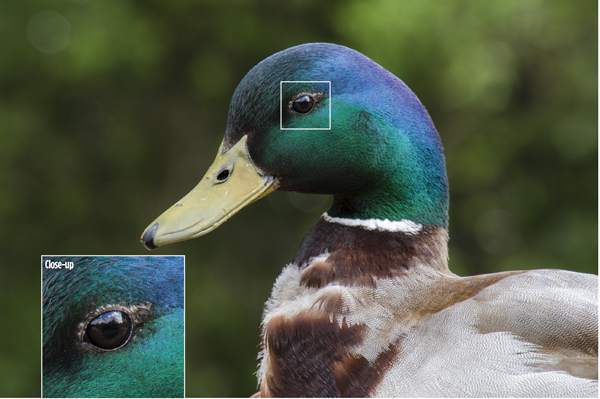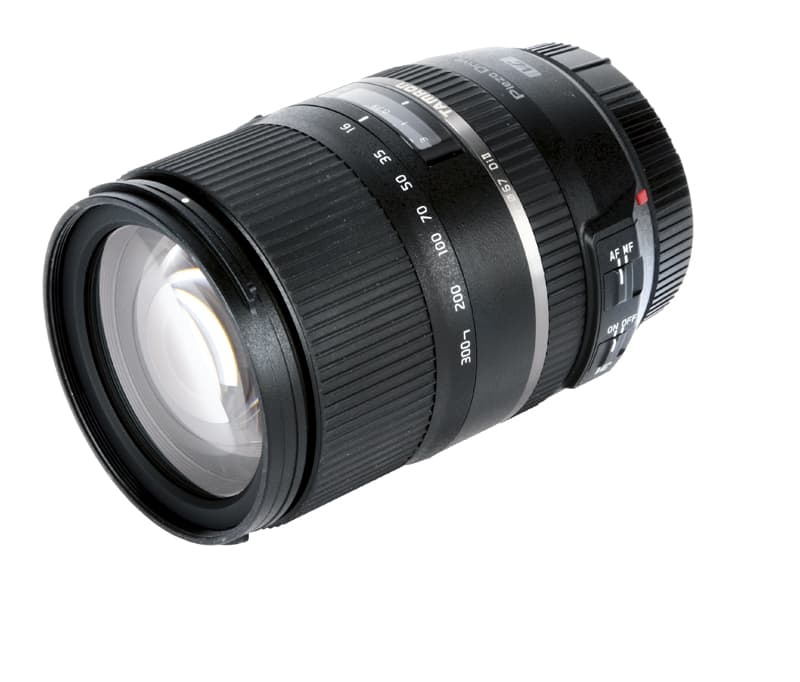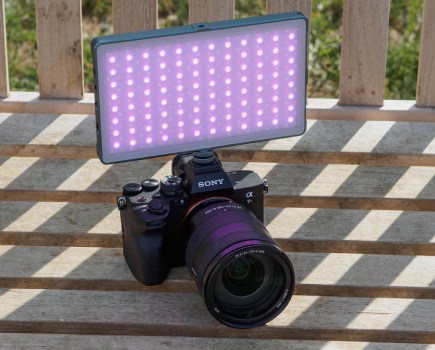Tamron 16-300mm f/3.5-6.3 Di II VC PZD Macro review
There was a time when bridge cameras were all the rage. This was the time when digital SLRs were a massive price, and digital compacts were not quite up to the job. It was also when the term ‘bridge camera’ was invented, because these all-in-one, multi-purpose zoom-lens cameras were literally a causeway, a step, a holding area, for photographers who really wanted a DSLR but who couldn’t justify the price.
When DSLRs eventually became more affordable, some manufacturers, Canon in particular, were surprised that there was still a demand for bridge cameras. People liked, and still do like, the convenience of a camera that does what a DSLR does, but which never needs the lens changing and never needs a bag to carry the extra lenses they no longer need.
A fear of dust on imaging sensors was another massive plus point for bridge cameras, as they never had to expose their innards to the elements. Also, people generally liked the convenience, while swallowing the disadvantages of the bridge camera’s inevitably smaller sensor.
Bridge cameras these days have much larger sensors, but you can get that same ‘bridge effect’ with an APS-C or full-frame DSLR if you find the right lens. Get a zoom that covers every focal length you will ever want to use, stick it on the camera and you’ll never have to take it off. This presents all the advantages of having a bridge camera, but with the quality advantage that a larger sensor affords. Great idea? Well, Tamron knows there are enough people who will think that it is for the company to justify the production of this all-encompassing 16-300mm mega-zoom.
While there are certainly advantages to using an APS-C sensor, there will also be costs in having a zoom with such a range. Unfortunately, the laws of optics dictate that some of those costs will be higher in a lens designed for APS-C sensors than they are for those designed for the thumbnail-sized sensors of the original bridge models.
Tamron 16-300mm f/3.5-6.3 Di II VC PZD Macro review – Build and handling

The version of this Tamron 16-300mm f/3.5-6.3 Di II VC PZD Macro lens I had to test was fitted for Canon EF-S, so I chose to mount it on an EOS 70D – being perhaps at the upper end of the kind of camera with which we might expect this lens to be used. Extended or contracted, the lens makes a fine mate for the body. The two balance well, and while somewhat heavy for all-day carrying, it is no worse than most enthusiasts are prepared to lumber themselves with.
The lens is not especially small until one considers the focal range it covers, but it has a deceptive look of a lens that should be small. In fact, when collapsed to 16mm, it is not much longer or broader than we might expect a 90mm f/2.8 macro lens to be, and, apart from the dual rings, it does not look especially unlike one. Its ability to double its physical length when set to the 300mm mark is quite surprising, because this 16-300mm f/3.5-6.3 macro lens does not look like a mega-zoom lens. I was expecting something a little more brash and bulbous, more along the lines of the 150-600mm optic from Tamron’s SP series that I tested in AP 12 April. This model, by contrast, is ‘quietly designed’ and features a remarkably narrow barrel with a 67mm-diameter lens cap. It is designed to look small, and it does.
Tamron has used the same rectilinear grid pattern for the zoom and focus rings that we have seen in previous models, with the zoom control forward of the focus. These feel good to the touch and are easy to grip and turn even with thick gloves. A focus-distance scale sits between the two rings beneath a glass viewing window, creating a decent distance to distinguish one from the other when our eye is to the viewfinder. A rotation of a little over 120°, or a third of a full turn, takes the focus from 0.39m to infinity.
The build of the lens seems solid enough, and there’s not too much wobble when the three-part barrel is fully extended. The supplied hood is a little squidgy, but that flexibility may well protect it from breaking when under pressure.
A lock is provided that retains the barrels when stowed in the ‘home’ 16mm position, but it seems hardly necessary as, in this factory-fresh unit at least, there is more than enough resistance to counter the draw of the Earth’s gravity when the lens is pointing down or up.
 The construction is a pretty complicated business, with 16 elements arranged in 12 groups. The more significant area is inevitably at the front end, where Tamron has used an element of only about 60mm in diameter made from the company’s ultra extra refractive (UXR) glass, the refractive properties of which are claimed by Tamron to play an important part in the miniaturisation of the whole unit. An additional forward lens is made from extra refractive (XR) glass, and there are four aspherical lenses to ensure good sharpness and contrast from all that light passing through highly refractive elements.
The construction is a pretty complicated business, with 16 elements arranged in 12 groups. The more significant area is inevitably at the front end, where Tamron has used an element of only about 60mm in diameter made from the company’s ultra extra refractive (UXR) glass, the refractive properties of which are claimed by Tamron to play an important part in the miniaturisation of the whole unit. An additional forward lens is made from extra refractive (XR) glass, and there are four aspherical lenses to ensure good sharpness and contrast from all that light passing through highly refractive elements.
The Nikon and Canon versions of the lens have Tamron’s Vibration Compensation (VC) system, and these and the Sony-fitted model (which will be introduced at some time in the future) feature the so-far excellent Piezo Drive (PZD) near-silent and fast AF motor.
Tamron doesn’t go into a lot of detail on the subject of exactly how moisture-resistant the lens is, but there is a rubber skirt around the mount that should seal at least the join with the camera.
Tamron 16-300mm f/3.5-6.3 Di II VC PZD Macro review – In use

Image: Shot approximately halfway through the focal range at f/8, this image shows plenty of details in the horses’ hair
Combined with the might of the EOS 70D’s AF system, this lens performs with impressive speed, and without fuss or much whirring of cogs and motors. Tamron’s PZD system lives up to its billing, being quick and almost silent, and managing to maintain these characteristics even at the longer end of its zoom range, where some models begin to lack accuracy and definite action.
It only takes a quarter turn of the zoom ring to take the focal length from its widest to its longest position, so the speed at which we can reframe what we are shooting is almost as quick as the lens allows focus to be found.
When we convert the marked focal lengths into measurements we can relate to 35mm or full-frame systems, we are presented with the effects of a 25-465mm focal range. The significance of this is that most zooms of this type designed for APS-C cameras start at 18mm, or 28mm in full-frame language. That 2mm difference, which seems nothing when marked on a barrel, makes a whole focal-length step in the real world – we all understand the genuine difference switching from a 28mm to a 24mm lens can make. In this sense, then, it takes a tiny but important step beyond lenses such as Nikon’s AF-S DX 18-300mm, and offers something more in line with the kind of wideangles that bridge cameras offer.
As is usual with these mega-zooms, we are faced with the long-end focal lengths that are not always practical to use, as the maximum working aperture when we set the lens to 300mm is f/6.3. Requiring a shutter speed of 1/300sec to keep away from the effects of camera shake, we often need to increase our ISO to levels uncomfortable for the subject matter. However, in this model the application of Vibration Compensation is of great assistance, and often during this test it made the difference between a sharp and clear image, and one that would have been neither.
Tamron 16-300mm f/3.5-6.3 Di II VC PZD Macro review – Image quality


Images: With the lens set at 70mm, I shot this scene across the entire aperture range. You can see how resolution increases to f/11 and then falls off beyond f/16
Image quality is where we might expect to pay the price for the convenience of the all-in-one-type zoom. We should remember, though, that while £600 is a lot of money, this is in no way an expensive lens. At this price, and with all those focal lengths packaged into something very small, we shouldn’t expect first-class results. I am not preparing you with excuses, but just trying to temper my findings with a degree of reality.
I will begin with the worst – chromatic aberration. Coloured fringing is one of the more difficult optical problems to correct after the event – and beforehand too, it seems – yet it is one of the more obvious to the eye and therefore one of the most objectionable. There are some aberrations I can live with, but I find purple and green glowing edges around high-contrast areas very difficult to accept.

Images: Coloured fringing in distant subjects extends well into the frame at f/6.3. At f/11 fringing still exists, but it is less obvious in the centre of the frame
While there have been a number of occasions when those edges have appeared during this test, with red and cyan too, those occasions were fewer than I had expected. Some fringing appears in the extremes of the frame when the wider focal lengths are used, but at the longest end of the zoom the fringes become wider and creep their destructive way towards the centre of the image. We know that it is the extremes of a zoom that are used the most, and in one that features such reach that length will be used a great deal. I suspect, then, that fringing will have an impact on a disproportionately high number of images shot with this model. One way to reduce the effects of these fringes is to tidy them into narrow bands by using a small aperture, but we have to be careful that we don’t sacrifice resolution for the sake of a purple edge.
As one might expect, image sharpness does not come at either end of the aperture scale when using this lens. While the larger apertures are decent when coupled with wider and mid-range focal lengths, they perform less well at the longest ends of the zoom. I made a tripod-mounted comparison using the 70mm focal-length setting (about 100mm in 35mm terms) and found that at this focal length resolution starts well enough, at f/5, and gradually improves to a peak between f/11 and f/16, but then drops off rapidly to become worse at f/22 than it is at f/5. The peak is narrow and clearly defined. When shooting at the 300mm setting, I found the peak even narrower and quite difficult to find in distant subjects. Certainly f/6.3 and a focus point at infinity does not provide anything that looks sharp or even detailed, but when focused on a closer subject things improve a good deal. In fact, close-up the lens performs well. I photographed a duck’s head 6ft (2m) away at the 300mm setting and used an aperture of f/10, and I am impressed with the detail and texture captured.

Image: I found best resolution with the longer focal lengths comes with subjects that are close to rather than distant. The texture of this duck’s feathers is very well rendered at f/10
I had expected to write at length on the subjects of vignetting and curvilinear distortions, but on the darkening of corners the lens has rather disappointed me. While some fall-off in illumination is detectable in technical subjects, in the real-life situations in which I’d expect this lens to be used that darkening is not really noticeable.
Barrelling and pincushion distortion do make an appearance, though, bending lines close to the edges of the frame at almost all focal length positions. While the barrelling at the 16mm end is not as bad as it could be in distant subjects, when we focus on closer things it is an issue. A church interior, for example, will suffer only a little, but the small bedroom of your house might take on an obviously distorted look.
Beyond the 50mm mark, the bending switches to the other way – inwards in the middle – and we enjoy pincushion distortion, the slimming properties of which chubby faces appreciate so much.

Images: This top image demostrates the degree of barrelling present at 16mm. Most software will allow barrelling to be easily fixed
Tamron 16-300mm f/3.5-6.3 Di II VC PZD Macro review – Our verdict
Broadly speaking, there are two extremes of photographer in this world – the happy snapper and the pixel-peeper. The pixel-peeper is serious about technical quality and is prepared to sacrifice convenience to achieve what he believes is perfection. The happy snapper enjoys taking pictures and isn’t too worried about the finer points of quality, but wants to be able to enjoy his hobby.
This Tamron 16-300mm f/3.5-6.3 Di II VC PZD Macro lens is definitely one for the happy snapper, and not for those who prefer to look at the pixels. It is a reasonably priced piece of kit that happy photographers will attach to their cameras and rarely remove, and it will always be convenient and allow them to get the shots they want to take. They won’t be enlarging to A2 very often, and will, in the main, remain extremely happy with their purchase. There are a lot of photographers in this bracket, and Tamron will be very successful with this lens.
The pixel-peeper, the technician and the architect, however, will be mostly dissatisfied with this lens, and frankly they have no business considering it as an option. When you buy a lens that covers 14 popular focal lengths within one barrel, you should know you are purchasing convenience, not perfection. That Tamron has made this convenience rather better than we have seen before is a credit to the company’s science and technology, but that doesn’t mean everyone will enjoy looking at its pictures. I wish that Tamron would employ some of its very clever science and technology in some fixed-focal-length lenses. It really is about time.









